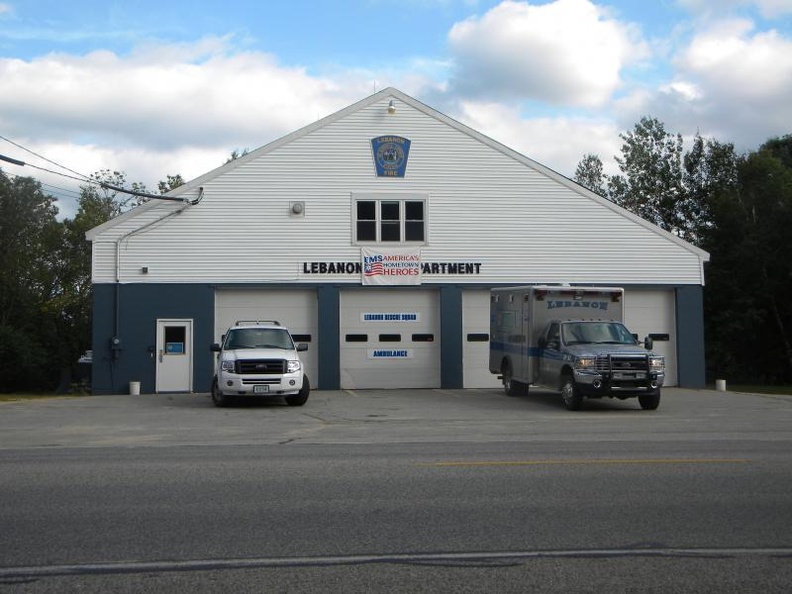Radio transmissions by several southern Maine fire and rescue departments have been jammed at times over the past few months, and during a medical emergency Sunday in Lebanon, the interference delayed ambulance response by a few minutes.
Jason Cole, assistant chief of Lebanon’s rescue department, said he answered a medical call shortly before 10 a.m. Sunday. When he arrived the situation was more serious than expected, Cole said, so he tried to call on his radio for another ambulance with advanced life support equipment and more emergency medical technicians.
But someone was using radio equipment set to the same frequency to block his transmissions, Cole said.
“Every time I’d key the mike, they’d cover us,” he said.
Cole had to leave the house and walk to the end of the driveway where he could get reception for his cellphone before he could call for help.
The jamming incidents “are getting more dangerous,” he said, noting that the patient is still in the hospital. “This is far more serious than the prank that this person apparently thinks it is.”
Federal law certainly treats jamming public safety communications as more than a prank. Interfering with those transmissions — as well as buying, selling or operating a jamming device — violates federal law and can lead to fines of up to $112,500 per act and prison, according to the Federal Communications Commission, which polices the airwaves.
Cole said a complaint about the jamming was filed Tuesday with the FCC. He said he was told by an FCC official that if such jamming were to result in a person’s death, the jammer could be charged with manslaughter.
The FCC “has a zero-tolerance policy in this area,” said Michele Ellison, chief of the agency’s enforcement bureau. She could not say Tuesday how often emergency responders have to contend with intentional jamming.
Cole said the jamming has affected his fire and rescue crews and those in North Berwick, Acton, Shapleigh and Limerick. Several other towns operating on the same frequency have not been affected, he said. In most cases involving the affected departments, only the transmissions of certain individuals are being jammed.
The jammer usually keys a mike — pressing the talk button — as soon as a firefighter or emergency medical technician provides his or her radio identification code. The mike is sometimes released and re-keyed repeatedly — probably to determine whether the fire and rescue crew is still trying to transmit. The jamming is repeated until the crews stop trying to transmit, said Jeff Kostis, a radio technician with Southern Maine Communications, which supplies and maintains the radio equipment used by many fire and rescue crews in York County.
“It’s definitely deliberate,” Cole said. “It’s not a game. One of these days, it’s going to cost someone’s life.”
Cole said the same York County departments had some of their transmissions jammed in 2004, and he was among the individuals who seemed to be targeted then. In that case, the transmissions being blocked were nonessential – an EMT or firefighter reporting for work or a crew clearing the scene of an accident or fire, he said.
That case was investigated by the FCC, which was preparing to set up monitoring equipment to pinpoint the source of the jamming when it stopped.
Cole said the FCC is reviewing the case file from 2004 as it begins to investigate the latest incidents. On Tuesday, the FCC told dispatchers in the affected departments that whenever they encounter more jamming, they should read a statement over the air warning that interfering with the transmissions is illegal.
Cole said another federal agency – which he declined to identify – is also investigating the jamming and working on a profile of the person interfering with the transmissions. He said most of the transmissions are being jammed at night or on weekends, suggesting the person or people involved have day jobs.
It’s not that difficult to jam radio communications, Kostis said.
Radios are sold that can be programmed to tune in to particular frequencies, and the frequencies of public service agencies can be found in online databases. Simply keying a mike, he said, overrides any other local transmission on that frequency.
In 2004, Cole said, the person jamming the transmissions sometimes whistled into the mike. This time, he said, there’s silence.
Cole also noted that, unlike 2004, radios mounted in ambulances and firetrucks are being jammed, and they are far more powerful than the hand-held radios that fire and rescue personnel carry with them.
Emergency crews have been getting around the problem by using cellphones, he said.
Cole said he expects the FCC to act quickly in the case, noting that mobile monitoring devices can be deployed more quickly now than in 2004 and satellite technology can also play a role in attempting to locate the jammer.
He said he’s most concerned for people who need medical help, such as the man he assisted Sunday, and for firefighters who have to use their radios to communicate from inside burning buildings.
“The radio, that’s their lifeline,” he said.
Staff Writer Edward D. Murphy can be contacted at 791-6465 or at: emurphy@pressherald.com
Send questions/comments to the editors.




Comments are no longer available on this story